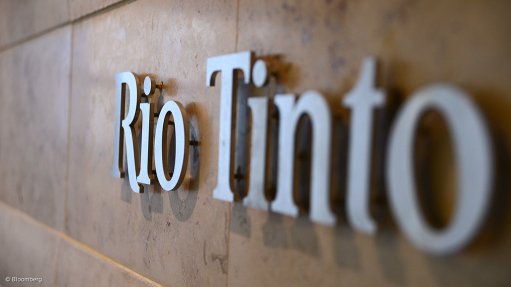
Photo by: Bloomberg
PERTH (miningweekly.com) – Mining titan Rio Tinto has seen production increase across all its commodity portfolios, apart from aluminium, during the three months to September.
“We have delivered improved production across the majority of our products in the third quarter, with a solid result at our Pilbara mines driving increased sales of iron-ore into robust markets,” said CEO Jean-Sebastian Jacques.
Iron-ore production for the three months to September increased by 10% on the previous quarter, to 87.3-million tonnes, with shipments up by 1%, to 86.1-million tonnes.
Rio said on Wednesday that the increased production from the Pilbara operation reflected a good recovery from the operational and weather challenges experienced earlier this year.
Meanwhile, copper production for the quarter was up 15% on the second quarter, reaching 157 800 t, reflecting the higher grades at the Kennecott operation, in the US, and improved throughput at Escondida, in Chile, brought on by higher concentrator throughput and an increase in recoverable copper in the ore stacked for leaching.
Bauxite production for the September quarter was also up by 3%, to 13 800 t, while aluminium production declined by 2% on the previous quarter, to 789 000 t, reflecting a safety shutdown at one of the three pot lines in Iceland, and an earlier-than-planned pot relining at the Kitimat operation, in Canada.
“Our strong value over volume approach, coupled with our focus on operational performance and disciplined allocation of capital, will continue to deliver superior returns to shareholders over the short, medium and long term,” Jacques said on Wednesday.
For the full year, Rio has targeted iron-ore shipments to reach between 320-million and 330-million tonnes, while copper production targets have remained unchanged at between 550 000 t and 600 000 t.
Bauxite production for the full year has been lowered slightly to 54-million tonnes, down from the previous estimate of between 56-million and 59-million tonnes, to reflect weather-related events in the first quarter of the year, while aluminium production was also expected to be at the lower end of the guidance of between 3.2-million and 3.4-million tonnes, reflecting the lower than planned volumes at the Iceland operation and Kitimat, and the non-managed Becancour smelters.